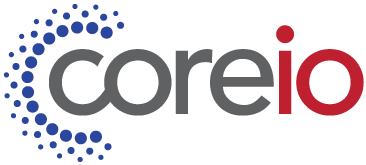 If you feel the need to rush your migration to Windows 10 as mainstream support for Windows 7 has come to an end, don’t. You’re better off taking the time to do it right to avoid any pitfalls during the transition.
If you feel the need to rush your migration to Windows 10 as mainstream support for Windows 7 has come to an end, don’t. You’re better off taking the time to do it right to avoid any pitfalls during the transition.
Even in the smallest, most standardized desktop environment, there are a lot of nuances and subtleties involved in upgrading your Windows OS to the latest and greatest. And the larger and more diverse the organization, the more variables to keep in mind, such as customizations and legacy application support for certain users.
If you’re only just starting your Windows 10 migration planning, there’s tremendous value in aligning with a partner who has knowledge and experience with Windows migrations across a wide range of business environments. Having completed more than 100,000 migrations over the past two years for some of the largest companies in Canada, including two of the “Big 5” banks, a global investment company and a major Canadian insurance company, Coreio has found there are three critical elements necessary for a successful Windows 10 update project.
1. Keep the lines of communication open
Communication is key to the success of any major IT project, and essential for the smooth transition to Windows 10.
It starts with senior management—you need participation and buy-in from the top down when it comes time to update your devices; it can’t be just another request from the IT department. The entire Windows 10 migration hinges on communications between various departments and a partner like Coreio. There is a need to have all the necessary information to move forward, so no meeting, milestone or deadline is missed. Communication is especially important if you are bringing in a partner to help with the migration because you need to let your staff know strangers will be in their office at some point looking at their device.
Having buy-in at the executive level is a great start, but a sense of urgency needs to be pushed out to every employee, regardless of device or location. Everyone needs to know what their role will be in a Windows 10 migration. Application owners must be ready and willing to take on the task of ensuring their application is ready for Windows 10 by conducting any necessary testing and making sure everything is good to go, particularly niche applications being used by developers. If applications aren’t ready, users can’t migrate and won’t be able to do their jobs. It disrupts the business and the ability to serve end customers.
If you don’t have the lines of communication open, then business units and users won’t know what they need to know about the migration to contribute to a smooth transition. Deadlines won’t get met, and application readiness will become a major stumbling block.
2. Be agile and ready to adapt
A Windows update is like all best laid plans; tasks and activities don’t always get completed as per the schedule, especially in a constantly evolving environment.
Being prepared for dynamic changes as you embark on your Windows 10 migration is essential as the switchover isn’t as simple as flipping a switch. The larger and more diverse the organization, the more likely you are to encounter small subsets of user groups with specific needs that you couldn’t account for early in the process. Some groups may have blackout periods where it’s not feasible to migrate them, such as a bank doing their quarterly review and reporting, or a financial services firm at tax time. There will be a stream of challenges that arise that you will have to deal with that require you to adjust the overall project plan.
For example, production applications may receive updates and patches while you are moving to Windows 10, which in turn may also be subject to other updates and patches—there’s always new releases in the technology world that’s oblivious to your Windows 10 migration schedule. Applications that you thought were going to work fine after the transition may not and will require troubleshooting and workarounds.
3. Partner with the right people
If you want to successfully migrate to Windows 10 efficiently and cost-effectively, there’s a lot to be said for having a partner who has guided many customers through a major operating system upgrade.
Coreio has learned over its many previous engagements how to best deploy people within our customer environments so there are clear lines of communications throughout a Windows 10 migration, as well as inherent flexibility and ability to respond to the inevitable surprises that come with major software deployment.
To support effective communications, Coreio establishes a knowledge base accessible by all users, so they understand the scope of the undertaking, every milestone and the ultimate deadline. We pair these information repositories with scheduled emails that keep employees in the loop on progress, next steps and when they can expect to be affected by the migration. These emails can be customized to reflect the unique requirements of any business. Our communications strategy is designed to anticipate any questions that may arise from C-suite to the end user, as well as facilitate input for custom requests
Because the lines of communication are open, any unexpected, non-standard upgrade requirements are quickly brought to the attention of the right people because of how Coreio staffs its customer migration teams—these upgrades are more than just technicians servicing workstations. Coreio also employs project leadership including business readiness and user discovery specialists that serve as coordinators to support the communications strategy as well as to fully understand the customer environment.
These teams are agile and adaptable because every business environment is in a constant state of change that influences budgets and timelines. By having Coreio coordinators on the ground managing the project, technicians can focus on the technical work, while discovery and readiness personnel are focused on inventorying workstations, applications and any related assets so they can be accommodated as part of the overall project without any disruption to the timelines or unexpected costs. They evaluate what machines must be replaced, which ones can be re-imaged and re-used, making sure any net-new machines arrive on time and meet specifications, and deal with any non-standard requirements that arise through the discovery process, including testing.
Ultimately, a Windows OS migration isn’t something you do very often, and even if your organization has been through one before, technology has evolved and IT staff have moved on, so there are plenty of differences and nuances that you must account for. Teaming up with a partner like Coreio allows you to tap into the expertise and experience of an organization that has already guided a diverse range of businesses through successful Windows 10 migrations.

Great article Amy. Having the opportunity to participate in 2 different Windows 10/Office 365 projects in 2 different capacities, these tips are essential to a successful migration and user experience for any type of organization.